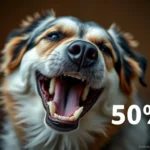
Introduction
As dog owners, we often marvel at our pets’ unique behaviors, but one question that frequently arises is, is my dog ticklish? Understanding a dog’s physical responses to touch can enhance our relationships with them and provide insights into their comfort levels and preferences. In this article, we will explore the concept of ticklishness in dogs, how to identify ticklish spots, and the implications of this behavior for our interactions with our furry friends.
Understanding Dog Behavior
What is Dog Behavior?
Dog behavior encompasses a wide range of actions and reactions exhibited by dogs in response to their environment, other animals, and humans. It is significant in canine communication, as dogs often use body language to express their feelings and intentions. For instance, a wagging tail can indicate excitement or happiness, while a lowered head may signal submission or fear. Understanding these behaviors helps us interpret our dogs’ emotions and react appropriately.
Common Dog Reactions to Touch
When dogs are touched, their reactions can vary widely. Some may wag their tails energetically, lean into the touch, or even roll over for a belly rub. These positive responses are often reinforced by the owner’s affection, creating a cycle of positive interaction. However, not all touch is welcomed, and it’s essential to be aware of a dog’s body language to ensure our affectionate gestures are well-received.
Ticklishness in Dogs: An Overview
What Does Ticklish Mean?
Ticklishness refers to a physical response to light touches or stimuli that elicit laughter or involuntary reactions. In humans, this can be a playful experience, often characterized by giggles and squirming. For animals, including dogs, ticklishness may manifest differently, and understanding this distinction is crucial for dog owners.
Can Dogs Be Ticklish?
The question of whether dogs can be ticklish has intrigued pet owners and scientists alike. While scientific studies on ticklishness in animals are limited, anecdotal evidence suggests that many dogs exhibit responses similar to ticklishness. Some experts believe that certain areas of a dog’s body might be more sensitive, leading to playful reactions when touched. As a dog owner, you may observe your pet’s unique responses, raising the question: is my dog ticklish?
Identifying Ticklish Spots on Your Dog
Common Areas Where Dogs May Be Ticklish
If you’re curious about where to find those ticklish spots, here are some common areas that many dogs seem to enjoy being touched:
- Belly: Many dogs love a good belly rub, and this area can often elicit a joyful response.
- Paws: Some dogs may react playfully when their paws are gently touched or massaged.
- Ears: The ears are a highly sensitive area, and light touches can provoke playful reactions.
These areas can be sensitive due to the concentration of nerve endings, making them prime spots for potential ticklishness.
Observational Signs of Ticklishness
To determine if your dog is ticklish, watch for specific behavioral signs. If your dog twitches, yips, or seems to squirm in response to a gentle touch, it may be a sign of ticklishness. Additionally, playful barking or rolling over can indicate enjoyment. It’s essential to approach this exploration with gentleness and care.
The Benefits of Tickling Your Dog
Strengthening the Bond with Your Dog
Engaging in playful interactions, including tickling, can significantly enhance the bond between you and your dog. These positive experiences build trust and affection, reinforcing your relationship. A strong bond leads to improved communication, making it easier to train and understand your pet’s needs.
Stimulating Mental and Physical Health
Tickling and playful interactions can have profound effects on a dog’s mental and physical health. Playtime stimulates a dog’s mind and can elevate moods, leading to a happier and more balanced pet. Additionally, active play promotes physical activity, which is vital for maintaining a healthy weight and overall well-being.
Should You Ticklish Your Dog?
Understanding Your Dog’s Comfort Level
Not all dogs enjoy being tickled, so it’s crucial to understand your dog’s comfort level. Signs that your dog enjoys being tickled include wagging tails, playful nudges, and relaxed body posture. Conversely, if your dog shows signs of discomfort, such as tensing up, moving away, or growling, it’s essential to respect their boundaries.
Tips for Safe Tickling
If you decide to explore tickling with your dog, follow these guidelines to ensure a safe and enjoyable experience:
- Start Slow: Begin with gentle touches and observe your dog’s reaction.
- Watch Body Language: Stay attuned to your dog’s signals, and stop if they appear uncomfortable.
- Choose the Right Time: Engage in play when your dog is relaxed and in a good mood.
Alternatives to Tickling
Other Forms of Play
If tickling isn’t your dog’s preferred form of play, there are plenty of alternative activities to engage in. Some options include:
- Fetch: A classic game that allows dogs to use their natural instincts.
- Tug-of-War: A fun interactive game that promotes bonding and physical activity.
- Obstacle Courses: Setting up an agility course can provide mental stimulation and exercise.
Variety in playtime is essential for keeping your dog mentally stimulated and physically fit.
Interactive Toys and Games
In addition to physical play, interactive toys can provide similar joy to tickling. Consider toys that dispense treats or require problem-solving skills. These toys engage a dog’s mind and can alleviate boredom, enhancing their quality of life.
Conclusion
In conclusion, exploring the question, is my dog ticklish, opens up a fascinating discussion about canine behavior and communication. Understanding your dog’s responses to touch can strengthen your bond and enhance their overall well-being. By observing your dog’s preferences and respecting their comfort levels, you can engage in playful interactions that benefit both of you. Remember, every dog is unique, so take the time to learn what makes your furry friend happiest.
FAQs
Are all dogs ticklish?
Not all dogs are ticklish, as sensitivity varies by breed and individual preference. Some dogs may not enjoy being touched in certain areas, while others might revel in playful interactions.
What should I do if my dog doesn’t like to be touched?
If your dog shows signs of discomfort when touched, respect their boundaries. Focus on other forms of play that they enjoy, such as fetch or interactive toys.
Can tickling be harmful to my dog?
Tickling is generally safe if done gently and with attention to your dog’s comfort. However, if your dog shows signs of stress or discomfort, it’s best to stop immediately.
How do I know if my dog is happy during playtime?
Signs of a happy dog during playtime include wagging tails, relaxed body posture, playful barks, and engagement in the activity. Always observe your dog for indications of enjoyment or discomfort.
By understanding your dog’s unique behaviors and preferences, you can create a fulfilling and happy environment for your beloved pet.









